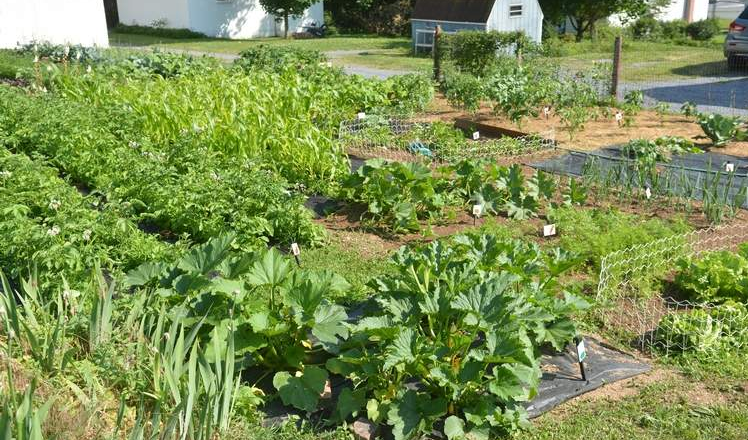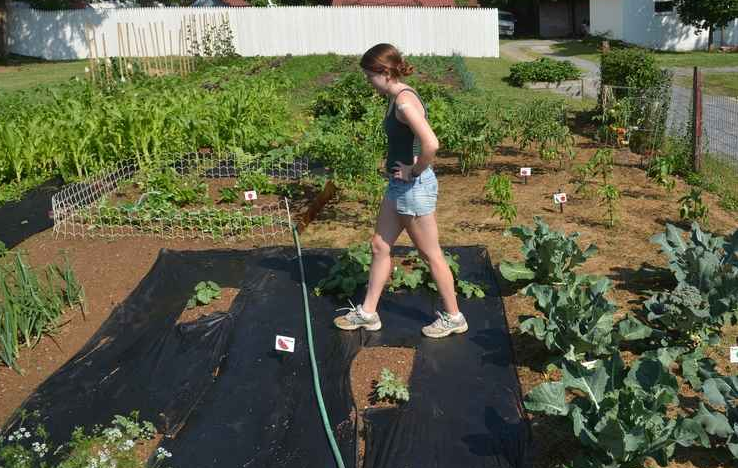I Grew Potatoes and Black Beans on the Roof of My Brooklyn Apartment and You Can Too!
- Emily Sechrist
- Nov 2, 2018
- 6 min read
Do you live in a city? Are you sick of eating supermarket produce that is past its prime? Are you unable to access a green space to grow food but desire to get your hands dirty? It may seem impossible to grow edible plants in the middle of a city, but this summer I discovered that it can in fact be done with a little creativity, time, and care. Read on to see how I was able to grow my own crops like black beans and potatoes while living in an apartment in Brooklyn, NY.

My Gardening Story:
I come from a long line of farmers and grew up helping my grandma tend to her large garden every year until she was too old to manage it. I was taking care of her one summer and decided to plant the garden for her to help cheer her up (she was pretty much confined to a wheelchair at that point). Instantly I became addicted to planting, tending to, and harvesting my own food and spent days out in the sun growing as much as I could in the 30 x 30 foot plot behind my grandma’s house. I was regularly harvesting baskets full of delicious homegrown produce from it, and the garden was even featured in the Local Newspaper.
After college I moved to the country’s biggest concrete jungle, New York City, and my gardening future suddenly looked bleak; however, my apartment has a backyard space so I tried to create a garden back there. Unfortunately, my backyard is surrounded by four-story buildings and therefore only gets sun for a few hours a day. Most of the crops struggled due to the lack of sun and although I was able to harvest a few items like cucumbers and kale, I was disappointed after several bountiful summers at my grandma's house.
To solve the sun issue this year, I decided to try container gardening on the large, flat roof of my apartment. My mom and I carried about a dozen planter boxes full of dirt to the roof one April afternoon and started planting underneath the Manhattan skyline. We planted black beans, basil, carrots, zucchini, snow peas, potatoes, radishes, carrots, onions, tomatoes, potatoes, jalapenos, kale, and lettuce. While some of these plants thrived, others did not fare well under the roof’s somewhat brutal conditions (more on this below).

My rooftop garden was nowhere near as bountiful as my first garden, yet I was able to grow a variety of foods in (on?) my own home and in the middle of the largest city in the US! Now that the growing season has come to an end, I’ve compiled instructions on how you can start a similar urban garden on your roof and a list of the biggest “lessons learned” from my rooftop garden experiment.
How to grow an urban rooftop container garden:

1) Make sure you’re allowed to use the roof
Some landlords don’t allow tenants to access the roof, so check your lease or contact your landlord directly before going on or bringing things up to the roof. Also verify that the roof is structurally sound enough to hold the weight of your planters.
2) Obtain some large containers
Go to a gardening/hardware store and pickup some large plastic gardening containers (or buy them secondhand!). Opt for the deepest pots you can find so that your plants' roots have maximum space to grow. Avoid concrete or ceramic pots as you want the containers to be as light as possible (especially if you have to carry them up several flights of stairs).

3) Fill the planters with potting soil
Again, minimizing weight is key so opt for special soil mixes that are designed for container gardens. These mixes are typically lighter than traditional soil.
4) Choose your plants
I found that ground-growing plants like onions and carrots did much better on the windy, exposed roof than taller plants like tomatoes and peppers, so take this into account when selecting what to grow. Also, be sure to chose plants that can withstand a lot of heat and sun, especially if your roof is black. This article provides more guidance on plant selection. Once you've chosen which plants you'll grow, head to a gardening store.

5) Start seeds inside/purchase seedlings/sow seeds directly
I purchased an LED grow lamp and started to sprout some of my seeds inside before it was warm enough to plant them outside. You can also buy seedlings at your local garden shop or sow seeds directly into the soil. The key is to not plant anything outside if there’s a chance of frost occurring.
6) Arrange your pots
Take note of the features of your roof. Don’t place any plants near chimneys or HVAC intake/exhaust vents. Most areas of the roof will receive direct sunlight 24/7, but if there are any large walls or neighboring buildings that create shade, place shadier plants in these spots. You can also shield plants from wind in this way.

7) WATER!
On a roof, your plants will be receiving intense sunlight daily. You’ll need to water them as often as you can if you want them to survive. Unless you’re lucky enough to have a hose on your roof, this means you’ll be hauling water cans up from your apartment to the roof. If you have enough space, time, and a strong enough roof, you could try constructing a rainwater collection and drip irrigation system.
8) Weed
Even though your garden is elevated, weeds will still grow inside the containers. Be sure to weed often to ensure that the roots of your plants have enough space to get big and strong.

9) Wait
This is the hardest part, but unfortunately growing things just takes time. If you notice some plants struggling with too much sun or wind, try rearranging the location of your planters. You can also move plants to your backyard, fire escape, or inside your apartment to see how they fare there. While you wait, experiment with different organic fertilizers to boost growth.
10) Harvest
This is the BEST PART! Nothing feels better than harvesting plants and eating them just minutes after. Harvest your crops and enjoy the fruits of your labor!
Gardening in containers on a roof was extremely different than gardening in a large, open plot of tilled soil. Here are the three biggest lessons I learned from this experience:
1) Wind is the enemy of your plants
As I mentioned above, the wind can really stunt the growth of young plants or destroy the structure of mature plants. Try to focus on growing ground plants like onions, potatoes, radishes, carrots, and turnips on your roof. Herbs are also a good choice because they grow quickly and relatively low to the ground.
2) Copious sun requires copious watering
Just a few sunny, 90 degree days can scorch your plants and destroy your garden because the small containers can't retain much water. I didn’t dedicate enough time to watering my plants and neglected them when traveling for weeks at a time, so I suffered many casualties like the peas shown above. If you’re thinking about gardening on a roof, watering needs to be a priority.
3) Respect your garden by giving it the time and attention it deserves
Because this garden was located somewhere I don’t go to often, I would have to take time out of my schedule and force myself up to the roof and tend to it. When my garden was located in a beautiful, accessible outdoor space, I found myself wanting to spend time around the plants and therefore gave them more attention. Try to find ways to force yourself to spend time around your roof garden, like setting up a sitting area or hosting a party on your roof. This will remind you to focus on the garden that’s growing above your head.

If you’re curious about rooftop gardening and have the space to experiment I highly recommend that you give it a try! I didn’t harvest too much from my little garden but I learned a lot about growing crops in a tough environment. This experiment also helped me feel like less of a city-dweller and allowed me to exercise my love of gardening!
Let me know if you’ve ever grown anything in/on your apartment and if you have any more tips.



























Comments